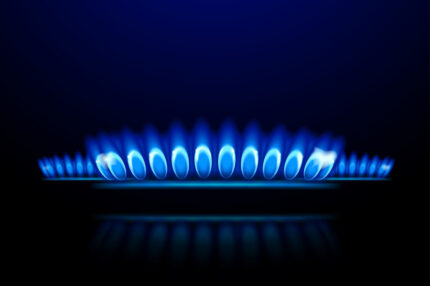As I told you in early March and again in April, the war in Ukraine has put a lot of focus on the global energy markets, especially the market for liquified natural gas (LNG).
Traders from the usual leading buyers of LNG globally—the Asian countries of China, Japan and South Korea—have been forced to compete with the desperate new European buyers of large amounts of LNG.

The U.S. announced in March that it aimed to export an additional 50 billion cubic meters of LNG per year to Europe by 2030. Asia is gobbling up the fuel as well, thanks to the economies in the region recovering from the coronavirus pandemic as well as governments trying to cut their carbon dioxide emissions.
The competition between Asia and Europe has gotten so hot that, in some cases, the purchasers are securing output from new projects that are still years away from actual production.
This is great news for the industry, because building a new LNG plant requires an investment of tens of billions of dollars. Developers usually need to secure 15-to-20-year contracts for 70% to 80% of the planned LNG output before they can receive financing and begin construction.
So far in 2022, U.S. producers have signed long-term contracts of 15 years or more for an annual 20 million tons of LNG—roughly double the full-year total from 2021!
This puts the United States on track to become the world’s largest exporter of LNG this year.
Sempra Energy
In March, I brought to you the biggest U.S. exporter of LNG, Cheniere Energy (LNG). Now, here’s another big beneficiary of the mad scramble for American LNG: Sempra Energy (SRE). Sempra is a utility and energy infrastructure company focused on electric and natural gas infrastructure. The company’s goal is to become North America’s premier energy infrastructure company.
Its Sempra LNG subsidiary (part of Sempra Infrastructure) is a gas infrastructure company and developer of liquefaction facilities in North America.
In addition to LNG, Sempra’s core strength lies in its transmission investments, added to its regulated utilities segment. Sempra’s energy transmission business is weighted toward natural gas delivery in California, Texas, and Mexico, all regions with high population growth.
Sempra’s two regulated utilities include SoCal in California, with more than 22 million gas customers, and Oncor, the largest regulated utility in Texas, with 10 million customers. It also has a strong presence in Mexico with IEnova infrastructure. Business in Texas is particularly doing well, too, thanks to Texas’ aggressive wind generation build-out.
The company has strengthened its balance sheet by selling a 20% interest in Sempra Infrastructure Partners to private equity firm, KKR . It completed the $3.4 billion sale in October 2021. Sempra is also selling an additional 10% stake in this business to the Abu Dhabi Investment Authority (ADIA) for $1.8 billion.
Sempra expects to close on the acquisition of 96.4% of IEnova, a joint venture company that develops and operates energy infrastructure in Mexico. As an early and large investor in the Mexican energy sector, Sempra could see an outsized share of new development projects as Mexico’s energy market deregulates.
Sempra and LNG
Sempra’s LNG terminals and pipeline give it exposure to a growing market for natural gas in the
U.S., Mexico, and the rest of the world.
As analysts at Morningstar report: “We believe Sempra’s LNG terminal has some moat-worthy characteristics, given its very low cost basis relative to world LNG supply, long-term contracts, and favorable location.”
I like the fact that Sempra management limits its risk with LNG development in a very smart way—by entering into long-term contracts with creditworthy partners, many of which also become equity owners.
The company is moving forward on developing its LNG portfolio, including its ECA LNG export facility.
ECA LNG Phase 1—a joint venture between Sempra Infrastructure and TotalEnergies (TTE)—will be a single-train liquefaction facility with a capacity of approximately 3.25 million tons per year of LNG. First production of LNG is expected by the end of 2024.
This project is unique in that it is slated to be the first Pacific Coast LNG export project with direct access to natural gas supplies in Texas and the western U.S.
Here are two other recent LNG developments for Sempra…
On May 25, Sempra announced it had entered into a heads of agreement (HOA) with RWE Supply & Trading, a subsidiary of Germany’s RWE (RWEOY), for the purchase of 2.25 million tons per year of liquefied natural gas. The LNG is to be supplied on a long-term (15-year), free-on-board basis from the Port Arthur LNG Phase 1 project under development in Jefferson County, Texas.
On May 16, Sempra Energy said it entered a preliminary arrangement to provide an annual two million tons of LNG for 20 years to Polish energy company PGNiG, from its Cameron LNG project. The company is expanding the facility together with its partners, including Japan’s Mitsui and Mitsubishi. It’s expected that PGNiG will also buy another one million tons per year from a different LNG plant planned by Sempra.
What Comes Next for Sempra?
Sempra management expects long-term earnings growth to be driven by the company’s five-year, $36 billion capital spending plan. Sempra Infrastructure is focused on natural gas expansion, with seven pipeline projects in development or under construction.
I expect earnings to benefit from the company’s focus on its utilities business, as well as from higher LNG exports in 2022. Adjusted earnings estimates for this year are $8.60 a share. There should be further growth in 2023, driven by higher natural gas demand at the company’s utilities.
Sempra continues to buy back stock, and has returned $750 million to shareholders through buybacks over the last six months. It also pays a dividend with a yield of about 2.75%, in line with the peer average.
Sempra expects to pay out approximately 55% of earnings through dividends on average the next
five years. It may even be a touch higher considering the high quality and relatively stable nature of
Sempra’s regulated assets combined with its long-term contracted LNG assets.
Sempra’s stock is a buy in the $160 to $170 range.






